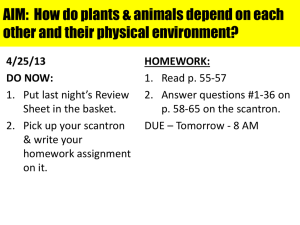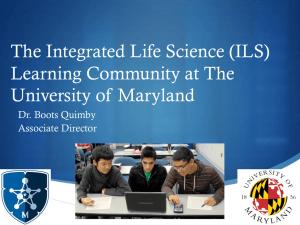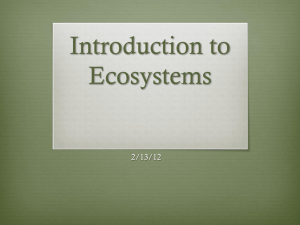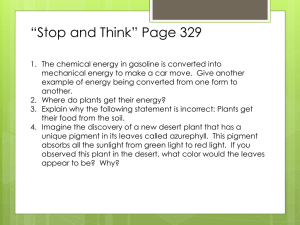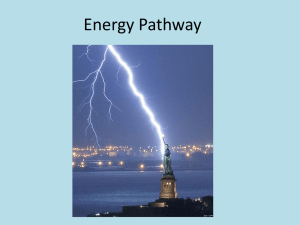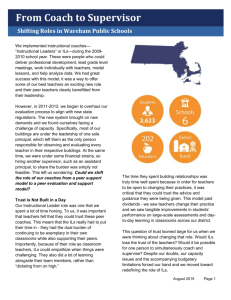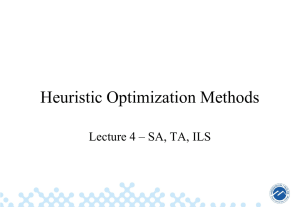How do organisms maintain dynamic equilibrium that sustains life?
advertisement
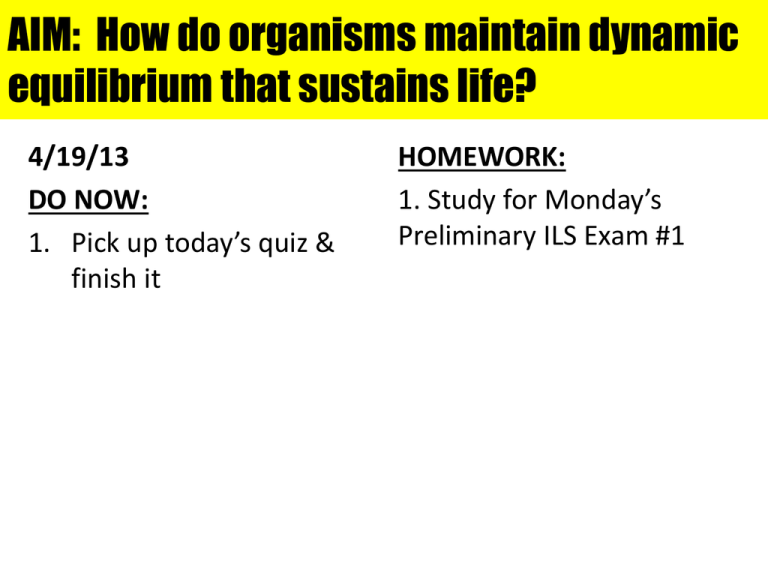
AIM: How do organisms maintain dynamic equilibrium that sustains life? 4/19/13 DO NOW: 1. Pick up today’s quiz & finish it HOMEWORK: 1. Study for Monday’s Preliminary ILS Exam #1 Identify the structure & function of the labeled parts of the plant below. A – Flower – Reproduction in the plant B – Leaves – Site of photosynthesis (makes food for the plant) C – Stem – Transports materials throughout the plant D – Roots – Takes in water Explain the function of the three parts of the seed. Seed Coat – Protects the developing embryo Embryo – The developing baby plant Cotyledon – Stored food for the embryo & young seedling Why does the seedling at right need the cotyledon after germination? The Cotyledon provides the seedling with food until its leaves can fully function & photosynthesis can take place What do all organisms need to stay alive? Energy from food How do plants make their food? Photosynthesis Where does photosynthesis occur in a plant? Chloroplasts What is needed for photosynthesis to occur? Carbon dioxide, water, and sunlight What is the formula for photosynthesis? CO2 + H2O + Sunlight Glucose + O2 + H2O ILS Question The flowchart below represents the process of photosynthesis. One step in the process is labeled X. Which activity occurs at X? Carbon dioxide and water are used to make sugar Where does photosynthesis take place? Chloroplasts ILS Question Base your answers to questions 1 and 2 on the diagram to the right and on your knowledge of science. The diagram shows a plant that carries out photosynthesis. 1. Sunlight is absorbed by the leaves. What two substances are also taken in by the plant for photosynthesis to occur? 2. Identify one product, other than sugar, that results from the process of photosynthesis. What is cellular respiration? The chemical process that cells use to release energy from food molecules Where does cellular respiration occur inside of the cell? Mitochondria What is the formula for cellular respiration? O2 + Food + H2O Energy + CO2 + H2O What are the waste products of cellular respiration? Carbon dioxide Water How are these waste products of respiration removed from our body? Exhale (CO2 & H2O) Sweating (H2O) Urine (H2O) ILS Question The diagram below shows a life process taking place within a cell. What life process is shown? Where does this life process take place within the cell? Describe what is occurring in the diagram below Explain the difference between a producer & a consumer? Producer – make their own food Consumer – must obtain food from the environment Give an example of a producer. Consumer. ILS Question Producers, consumers, and decomposers are three types of organisms that obtain nutrients in different ways. In the chart below, identify each organism as a producer, consumer, or decomposer based on its source of nutrients. ILS Question 1. Identify the living and nonliving parts of the fish tank ecosystem. 2. Identify the producers & consumers in the fish tank. 3. How are the living organisms in the fish tank interdependent on each other for survival? Identify the 4 types of consumers. Herbivores – eats plants Omnivore – eats both plant & animals Carnivores – eats animals Decomposers – eats long dead organisms (decompose wastes) ILS Question The diagram below shows a food chain. 1. Identify the herbivore in the diagram above. 2. Identify the carnivores in the diagram above. What is metabolism? All of the chemical activities in an organism’s body What factors influence your metabolism? Hormones Exercise Diet If you have an imbalance of required nutrients, what may happen? Weight gain Weight loss Disease ILS Question Insulin and glucagon are hormones that affect blood sugar levels. The diagram below shows the feedback system used by the human body to increase and decrease blood sugar levels. This feedback system is one way that the human body (1) circulates gases (2) maintains equilibrium (3) destroys viruses (4) transports nutrients

